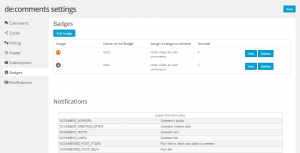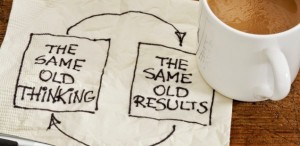Here are all the teams who will be involved in implementing the CJO platform and what you need to do to prepare them.
One of the benefits of a customer journey orchestration (CJO) platform is improved alignment among business units. In order for this to work, teams in those units need to be prepared ahead of the implementation.
“The multi-channel marketing approach the customer journey orchestration utilizes also means that things can get more complicated,” said Greg Kihlstrom, principal and chief strategist at GK5A, at The MarTech Conference.
Here are the key teams that will be involved in the process and what to do to prepare them.
Leadership
“Customer journey orchestration often requires big changes in process resources and expected outcomes,” said Kihlstrom. “Leadership support is needed to make these big changes happen.”
There must be a C-suite sponsor for the project to prove how important it is to the company. She or he needs to be regularly updated about any resulting changes in organizational structure or processes.
“Ensure you’re on the same page as your executive leadership and keep that leader in the loop so that they can report to other stakeholders,” Kihlstrom explained.
Marketing and experience teams
“Customer journey orchestration often requires closer collaboration among teams, even if they’re used to working with each other on a regular basis,” said Kihlstrom. “Who is designing and managing the journey? Is it marketing? Is it customer experience? Is it a combination of both?”
The business should take a full inventory of the tools and methods these teams are already using. This way, changes to marketing and customer experience processes can be anticipated ahead of the implementation.
Kihlstrom also recommends these teams consider a flexible work method, like an agile or sprint-based approach.
Data and engineering teams
It’s important to give careful consideration to the data that will power the new CJO platform. Therefore, data and engineering teams need to be included in the implementation.
“How frequently will new data need to be requested from either from these teams or from the systems that these teams support?” Kihlstrom asked. “What are both short- and long-term engineering needs for customer journey orchestration?”
He added, “You might already be working with your data engineering teams on other efforts, but make sure you share the big picture of customer journey orchestration with these data and engineering teams.”
Having data and engineering on board helps get stakeholder buy-in across the organization.
“Make sure everybody understands where you’re going, and make sure that you understand resource availability,” said Kihlstrom.
Will data requests from the new CJO-related processes stretch data and engineering too thin? Will these needs be filled in-house or will they be outsourced? These kinds of questions can be answered by including them in the process, and they can also help in coming up with solutions.
Customer service and support
The customer service and support team will be able to answer questions about how the new platform can move customers along in the customer journey. For one thing, they can report how interactions with customer service and support affects people’s propensity to buy.
“Obviously if someone just complained about your product or service they may not be as likely to buy more, so you want to take that into account with your customer journeys,” said Kihlstrom.
This team can also suggest ways the platform can help anticipate customer service issues and proactively solve them.
“They know a lot, they interact a lot with your customers, they have a lot to share on this,” Kihlstrom said. “So make sure you discuss some common issues and potential problem areas when you start orchestrating things.” not talk about opportunities. It’s not just about solving problems, it’s also about opening up new opportunities like proactively. Solving some challenges.
Sales
Like customer service, sales teams know a lot about customer journeys and automated flows. They can give insights into when a personal touch is preferred over an automated or orchestrated response.
Also, remember that teams might have different needs in supporting customer interactions with the CJO platform.
“A large sales team focused, perhaps, on B2B or larger sales, may have a high-touch sales environment, and therefore journey orchestration and the automation that’s involved in it, may not be the best approach for every single communication,” Kihlstrom explained. “Make sure you understand the cadence that your sales team uses for one-to-one more personal touches and make sure you coordinate that.”
Building consistency
A CJO platform helps an organization become more customer-centric and content plays a big role in this. As customers move through their journeys, they are often engaging with tailored to their specific place in it.
Content must be relevant and consistent. This requires coordination with the content team, as well as with marketing and other teams.
“Right now, if you’re not doing journey orchestration, you might be doing a lot of single-channel orchestration or automation and therefore there may not be quite as much of a need for consistency,” said Kihlstrom.
The more channels involved in customer journey orchestration, the more you need to focus on consistency and internal communication. Kihlstrom said this requires understanding how different systems are used to create, manage and publish content.
“Start to understand where and how you can start standardizing content creation and creating efficiencies,” Kihlstrom said. “If you’re orchestrating content across multiple channels, chances are there’s some opportunities to create similar content using similar language across those channels.”
He added, “Even though customer journey orchestration involves plenty of technology and integrations, anyone that has implemented it knows that there are team members or people behind the important work of both implementing it.”
The post How to prepare teams for customer journey orchestration appeared first on MarTech.
MarTech(27)
Report Post





